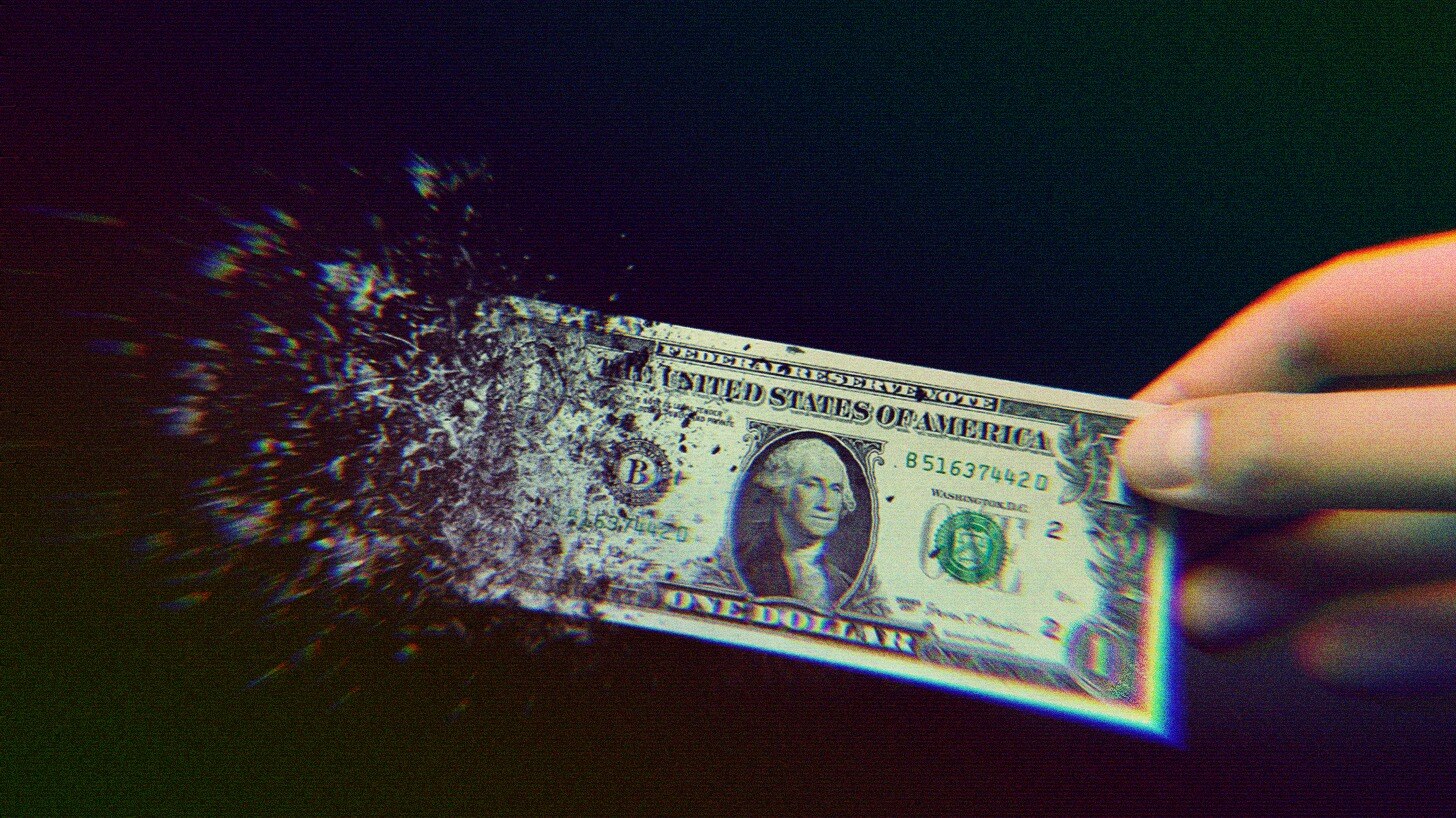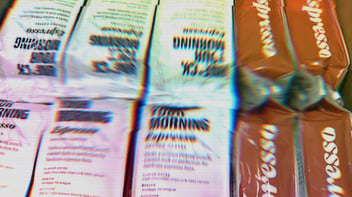Et tu, Krugman?
New York Times columnist’s horrible take.
 Image Description: A dollar bill disintegrating.
Image Description: A dollar bill disintegrating.
I’ve long considered Paul Krugman to be a rational, empathetic liberal economist. In the modern sense, that is. Not in the classical liberal economist vein that neoliberal Chicago School economists portray themselves. While not a devotee of Krugman, I found great insight in his 2012 book End This Depression Now! while deep in my journey to understand the value of a Keynesian approach to the financial crisis.
So I’ve kind of brushed off criticisms of him as an establishment mouthpiece, for the most part, choosing to see him as autonomous and independently minded among dismal scientists. And I still find his analyses accessible and valuable. With that disclaimer in mind, I was profoundly disappointed in one of his recent opinion pieces about Bidenomics and his rather patronizing tone toward the middle and working classes.
Here’s the concluding paragraph of Paul Krugman’s recent New York Times column on inflation this week:
“Consumers still have very negative views about the economy, although it’s becoming unclear whether those negative views will hurt Democrats very much in November. But politics aside, it now seems clear that Bidenomics worked pretty well.”
Krugman is better than this. But wishful thinking abounds with the specter of Donald Trump looming on the horizon. I’ll forgive him this horrible take in the hope that he comes to his senses after a Harris victory in November but feel a correction is in order.
Same publication, same publication date, here’s an excerpt from a troubling piece about inflation, jobs and consumer confidence: “New data showed signs of the labor market cracking across a range of metrics. People reported leaving or losing jobs, marked down their salary expectations and increasingly thought that they would need to work past traditional retirement ages. The share of workers who reported searching for a job in the past four weeks jumped to 28.4 percent — the highest level since the data started — up from 19.4 percent in July 2023.”
In fact, the next day the data were released and it showed that job growth was overstated by 818,000 over the 12 months leading up to March and there are likely more revisions on the way.
Can we square this circle?
Deconstructing Krugman
Let’s start by looking at where Krugman points the finger.
“So we have basically made a full round trip on inflation. But what brought it down? Before I get there, let’s talk about two kinds of people who refuse to acknowledge this good news. First, there are inflation truthers — people who claim that the official numbers can’t be trusted and that inflation isn’t really way down.”
Considering the job numbers we were told to trust just got whacked, I think it’s hardly fair to criticize people for questioning official narratives.
And then, Krugman employs a typical tactic among elite opinion writers: My information is better than yours. Your financial stress doesn’t matter. You might be struggling to pay your bills but that’s not what the charts and graphs say. Inflation is down to pre-pandemic levels. It’s lower than other countries. We won. Stop complaining. The Biden administration did its job. If you don’t believe it then you’re a truther engaging in conspiracy-level denial.
Not mentioned in his essay is that inflation is cumulative. We haven’t experienced disinflation, only a slowing of inflation, which means that prices are still going up, just at a slower rate and the baseline is now higher than it’s been in decades. He also conveniently overlooks the fact that the other OECD nations he’s comparing us to have things like free education, robust social safety nets, paid family leave and subsidized healthcare.
He then employs another tried and true tactic of elitists: shame.
“Since 2019, which is the year people usually cite when saying that things used to be better, consumer prices have risen 22.6 percent, which has many people upset. But average hourly wages have gone up 25.3 percent, while wages for nonsupervisory workers are up 28.2 percent. If you want to see prices go down substantially, are you also in favor of big wage cuts?”
Holy shit. Krugman acts as though wage growth and inflation growth are 100% correlated. That this is a one-to-one. If prices went up X and wages went up X+2 then you’re better off than you were before. How would you like it if we cut your wages?
This is a take more worthy of Thomas Friedman.
Here’s where this falls apart in a matter of seconds. Hourly wages increased from an average of $25 to $30 in the time period he mentions. There’s your 25% increase, more or less. Assuming these hourly wages are for 40 hours-a-week, 52 weeks-a-year, that’s a gross income of $62,400. Take home would be somewhere around $46,800-per-year or $3,900-per-month.
The Bureau of Labor Statistics breaks down household expenditures reporting, “a single person household spends an average of $4,337 on monthly expenses.” So our typical hourly wage American working 40 hours per week, every single week of the year will have a gap of $437 per month, or $5,200 per year.
Experian reveals the average American is carrying $6,500 in credit card debt at a rate of 22%. In other words, wage growth and inflation is not a one-to-one relationship and the delta between the two is compounding at alarming rates, thus leading to the pressure that people like Krugman are so quick to dismiss. For what it’s worth—and I think it’s worth a great deal—55% of the American workforce earns hourly wages.
This is the elite mind trap. Top earners have experienced staggering growth over the past several decades. They’ve completely pulled away from the pack. When high interest rates punish wage earners with things like variable rate mortgages, or inflation shows up in grocery bills or at the pump, it severely constricts people’s ability to plan, save or survive. People who are one catastrophic incident away from insolvency; or even a small incident that costs thousands of dollars that people don’t have.
When interest rates go up for high income individuals and wealthy families, so do their portfolios. In fact, they win on all sides and compound their returns with a combination of secure fixed income investment vehicles and safe harbor in equities that are increasing because companies are still buying back their shares and taking advantage of customers with inflated prices. That’s why P/E ratios—stock price relative to earnings—are on the rise again. Institutional investors are still flooding the market with capital they accumulated from the low interest rate years and companies are continually shrinking the pie through buybacks to inflate valuations. So wealthy investors are winning on both sides of the equation.
That’s why the inflated jobs numbers are a kick in the teeth and we ignore the trevails of the working class at great peril. This report is a crack in the armor of mainstream economists and the braintrust at the Federal Reserve who have been pointing endlessly at jobs data to prop up the theory of the dual mandate. We’ve talked about this before but it bears repeating how this mandate is anachronistic in the modern era where the United States is concerned.
The Dual Mandate is Horseshit
The dual mandate of the Federal Reserve dictates that its tools exist to maintain a certain level of employment, meaning a chunk of the population must be unemployed in order to maintain moderate levels of inflation. The underlying belief is that a segment of the population must be perpetually unemployed in order to keep a minimum threshold of labor demand. In turn, this allows for the suppression of wages in order to keep consumers from overspending and thereby overheating the economy. Otherwise, we run the risk of the “wage-price spiral,” a never ending doom loop of increasing wages forcing corporations to raise prices to maintain profitability.
Let’s unpack this a little bit with an example from history.
Full employment during World War II was taught to us as an outlier. It was a one-off, a reflection of the wartime economy that couldn’t last because the government was running unsustainable deficits. But when the world’s industrial economies were reshaped during Bretton Woods to allow for flexibility in monetary policy it relieved the artificial burden of the physical gold standard. Conflicting paradigms were at play in the building of the modern post-war economy when superpowers emerged on the international stage. But if we look at the character of the wartime economy and the decades thereafter, it teaches us something about market controls, centralized planning, the benefits of full employment and the role of taxation to curb bad corporate behavior.
Central planning, price controls, heavy regulations, industrial subsidies, expanded welfare benefits, public works programs, increased union membership and high corporate tax rates were hallmarks of the U.S. economy during what most economists consider the golden era of prosperity and growth. All measures that are written off as socialist in nature, anti-democratic and an affront to capitalism and free markets.
The Chicago School, as we’ve covered extensively, changed all of that.
Today the federal government, mainstream economists and media pundits judge economic policy by three events. Stagflation in the 1970s, the financial crisis and the pandemic. There’s a dissertation in there about why these outlier events are weighted so heavily in our policies, our memories and prevailing narratives. Krugman’s piece is mired in this kind of thinking. His defense of Bidenomics is rooted in the idea that the government exists to invest in large-scale public works projects to allow the free markets the time to develop around these initiatives. In this scenario, the government is nothing more than an early stage venture capitalist.
It’s why the recently released Harris economic vision rings so hollow even while Project 2025 would be nothing less than catastrophic. The former ignores the fundamental flaws in sustaining a free market model that simply isn’t working for the vast majority of Americans. The latter would destroy the last vestiges of safety nets and protections for the poorest Americans, the working class that exists in perpetual precarity, the dwindling middle class and even the bulk of the so-called upper middle class.
The Harris Economic Plan
The Harris plan, for example, calls for federal limits on price increases for food producers and retailers. The mechanisms to enact measures such as these aren’t really defined and it’s hard to imagine how executive orders and regulations would withstand court challenges or what metrics would be used to determine who is gouging and where. More on point is her plan to crack down on mergers and acquisitions in the food industry, such as the FTC’s ongoing efforts to scuttle the Kroger/Albertsons merger. But what are we to do about the fact that a quarter of grocery sales in the country go to Walmart? Walmart’s percentage of online grocery sales was 37% as of Q2 2024, a trend that’s only going to continue.
Further up the supply chain we also know that a handful of conglomerates control food manufacturing from the protein industry to consumer goods so we need to do more than prevent future mergers, we need to do some good old fashioned trust busting.
In terms of housing Harris is calling for a suite of tools from tax incentives for affordable housing, starter funds for first-time home buyers, a cap on bulk home purchases by speculative investors and a $40 billion investment fund for affordable housing initiatives. This completely ignores renters and does nothing to curb the appetite of sellers to increase prices, thereby negating the incentive scheme.
The rest of the plan reinforces Biden-era plans to bolster the insurance market, reduce prescription drugs and an array of tax credits. These are bandages on a hobbled system. At a moment when we need structural changes and paradigm shifts, we’re tinkering on the margins. As I’ve said before, you can’t eat a tax credit.
During the pandemic when people received checks directly into their bank accounts the research showed that the bulk of these funds went toward rent, food and paying down debt. The mainstream economists suggest or state outright that this is why inflation gripped the United States. But that doesn’t explain why it literally gripped the rest of the world. Nor does it address the fact that corporations have recorded the highest profits in history since the pandemic. Corporate America took all of the excess money running through the economy and our system more than allows for this behavior, it encourages it.
Since the Clinton administration, corporate executives are incentivized by share price, not performance. Deregulation has created a permissive environment that encourages corporations to cut corners and periodically tank the economy. Bailouts codified recklessness in all sectors of the economy. Here’s how they all work together.
Most modern CEOs have rational salaries and exorbitant incentive packages based upon share price performance. The latter is taxed at a far lower rate than normal wages. So executives are incentivized to bolster share prices rather than core performance metrics. Deregulation allows corporations to consolidate and eliminate competitive forces that otherwise protect buyers and consumers. And the bailout culture eliminates the downside of risky behavior because the government has demonstrated that it will step in to secure corporations over consumers first and foremost. This comes in the form of direct cash payments or preposterously low interest rate debt. The corporate execs have used these funds over the years to buy back stock, which raises the share price. And the cycle continues.
Bottom Up, Middle Out = Trickle Down
The long bet placed by the Biden Administration was that government investments into certain industries and the American infrastructure would encourage and bolster growth. Fair enough. It was quite the gift to the corporate class, but not one to be angry with considering these were investments into industries that employ millions of Americans. Reducing our reliance on offshore suppliers, building resiliency into the core infrastructure of the U.S. and investing in so-called green sectors is hardly a bad thing. It’s also true that the era of cheap money officially ended and the Federal Reserve has been less likely to purchase toxic assets outside of the rare occasion it has had to step in to prop up overnight settlement markets. That’s for another day.
But because we didn’t change the systems and structures that led to severe economic downturns, corporations have sidestepped the free government money issue by raising prices on American consumers with impunity.
This was the big blindspot of the Biden plan and why the bottom up, middle out strategy was plagued with issues from the start and has thus far failed to take hold for most Americans struggling with high interest rate debt, wages that have begun to stagnate once again and consumer good prices that are crushing the majority of the population.
The Harris plan is a doubling down on Bidenomics and people like Krugman are providing cover for what is essentially this generation’s version of trickle down economics. Tax credits for the poor, everything else for the rich. If Krugman’s conclusion was more honest it would be more palatable. Bidenomics and by extension Harrisonomics is amplifying the status quo but at least it’s better than tearing it all down, which is what we can expect under a Trump administration and Trump-controlled Congress.
Whether you’re hoping for the best or bracing for the worst, it’s best to go forward with eyes wide open.
Here endeth the lesson.
Max is a political commentator and essayist who focuses on the intersection of American socioeconomic theory and politics in the modern era. He is the publisher of UNFTR Media and host of the popular Unf*cking the Republic® podcast and YouTube channel. Prior to founding UNFTR, Max spent fifteen years as a publisher and columnist in the alternative newsweekly industry and a decade in terrestrial radio. Max is also a regular contributor to the MeidasTouch Network where he covers the U.S. economy.


